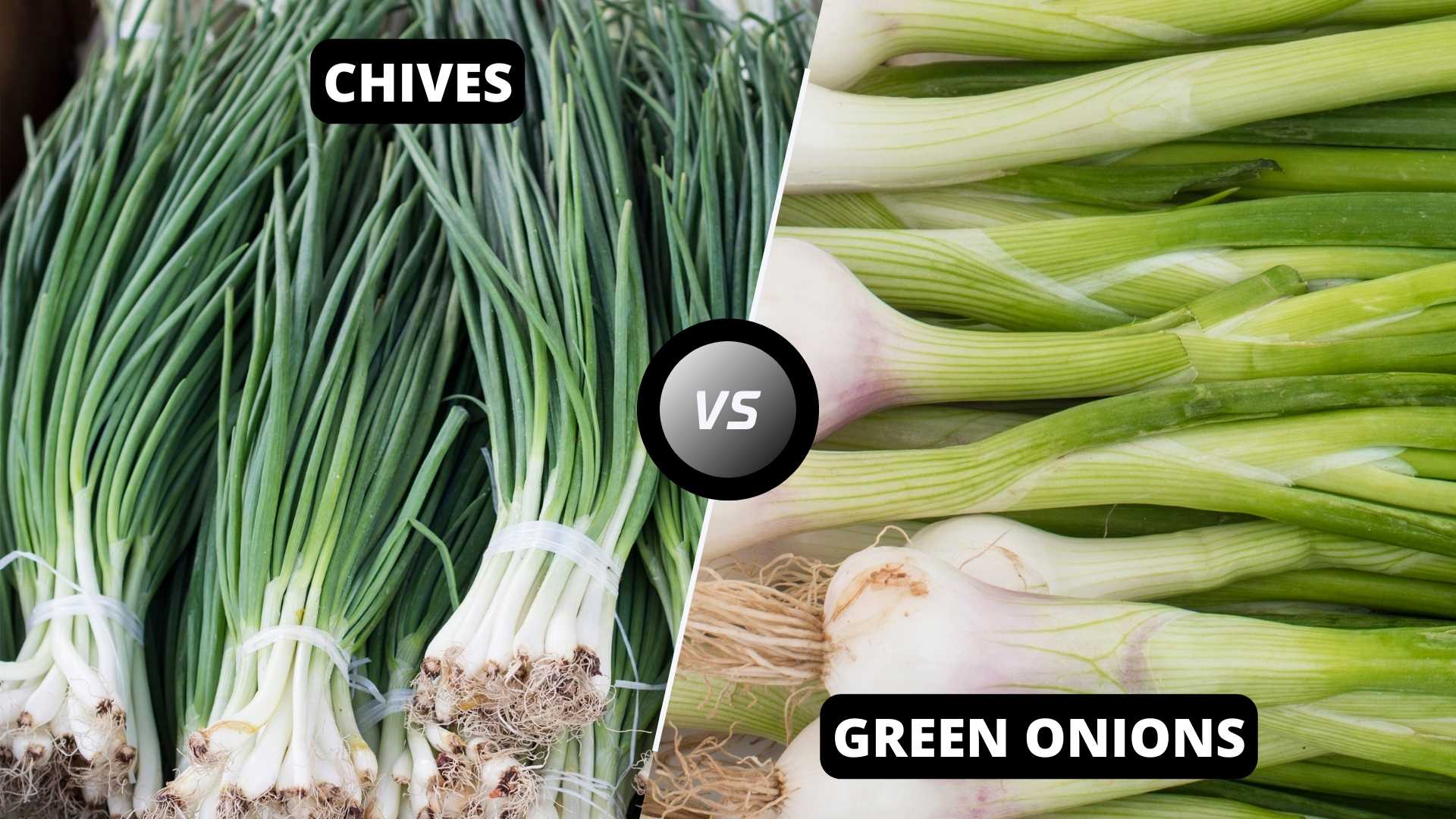Chives and green onions are two of the most commonly used herbs in culinary practices. They are often used interchangeably in recipes and are both known for their pungent flavor and aroma. In this article, we will compare and contrast the two herbs in terms of nutrition, taste, versatility, and uses in cooking to help you better understand which herb to use for specific recipes and dishes.
What are Chives and Green Onions?
Chives and green onions are both members of the Allium family, which includes onions, garlic, and shallots. Chives are a type of herb that have long, thin leaves that are hollow in the center.
They are typically used as a garnish and have a mild onion flavor. Green onions, on the other hand, have a white base that gradually tapers into green stems. They have a slightly stronger flavor than chives and are often used in Asian and Mexican cuisine.
Comparison of Chives vs Green Onions
Nutritional Comparison
In terms of nutrition, both chives and green onions are low in calories and high in vitamins and minerals. Chives are a good source of vitamin C, vitamin K, and folate, while green onions are high in vitamin C, vitamin A, and calcium. Both herbs are also rich in antioxidants and have anti-inflammatory properties.
Flavor Profile
Chives and green onions have distinct flavors and aromas that differ slightly from one another. Chives have a mild onion flavor and a delicate aroma, while green onions have a stronger onion flavor and a more pungent aroma.
Chives are best used in dishes that require a subtle onion flavor, such as salads, soups, and dips, while green onions are ideal for dishes that require a stronger onion flavor, such as stir-fries and salsas.
Culinary Uses of Chives
Chives are versatile herbs that can be used in a variety of dishes. They are often used as a garnish for soups, salads, and potatoes, and can be added to dips, dressings, and spreads to add a subtle onion flavor. Chives are also commonly used in French cuisine, where they are added to omelets, quiches, and sauces.
Culinary Uses of Green Onions
Green onions are a staple in Asian and Mexican cuisine and are often used in stir-fries, soups, and salads. They can also be used as garnish for tacos, nachos, and enchiladas. Green onions are also commonly used in Korean cuisine, where they are added to pancakes, noodles, and rice dishes.
Cooking with Chives
When cooking with chives, it is important to use them sparingly as their delicate flavor can be easily overpowered. Chives are best added at the end of the cooking process to preserve their flavor and aroma. They can be added to scrambled eggs, quiches, and omelets, and can be used to make compound butter, which is often served with steak or fish.
Cooking with Green Onions
Green onions can be used in a variety of ways when cooking. They can be chopped and added to stir-fries, soups, and stews, or used as a garnish for tacos, burritos, and quesadillas. Green onions can also be grilled or sautéed and used as a topping for baked potatoes or added to omelets and frittatas.
Versatility in the Kitchen
Chives and green onions can be used interchangeably in some dishes, such as potato salad, dips, and dressings. Chives are often used as a garnish for deviled eggs, while green onions are used as a topping for baked potatoes.
Both herbs can be used to flavor mayonnaise, sour cream, and cream cheese-based dips, as well as add a burst of flavor to egg dishes, such as omelets and quiches. Additionally, both herbs can be used in marinades, sauces, and dressings to add an extra layer of flavor.
Conclusion
In conclusion, chives and green onions are two versatile herbs that can be used in a variety of dishes to add flavor and aroma. Chives are best used in dishes that require a subtle onion flavor, while green onions are ideal for dishes that require a stronger onion flavor.
Both herbs are low in calories and high in vitamins and minerals, making them a healthy addition to any diet. When cooking with chives or green onions, it is important to use them sparingly to avoid overpowering other flavors in the dish. In some dishes, the two herbs can be used interchangeably, providing a wide range of culinary options.
